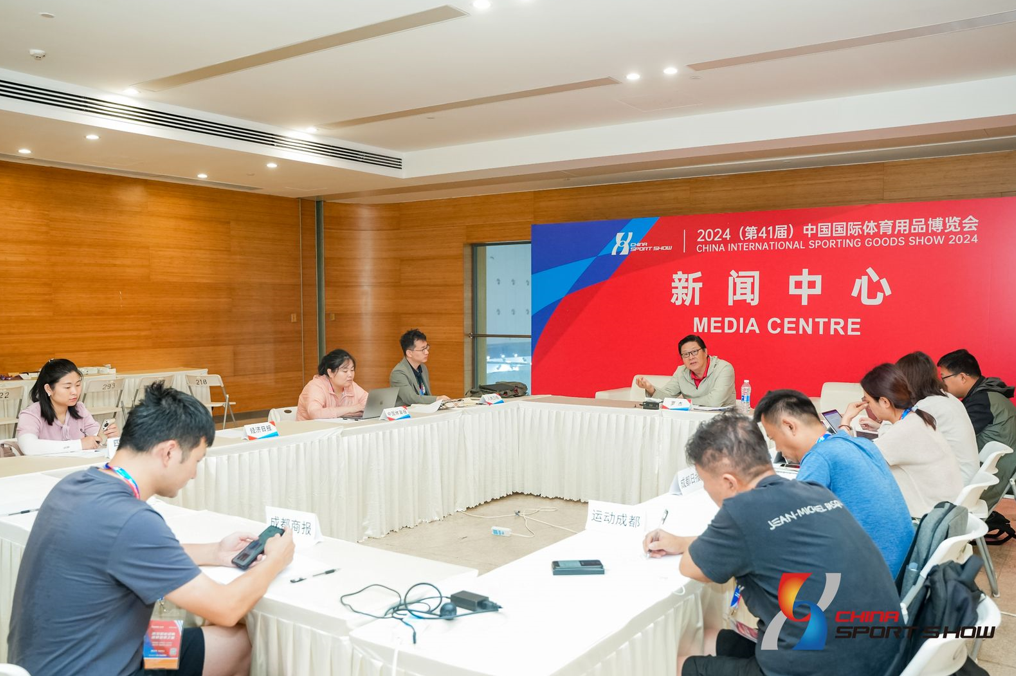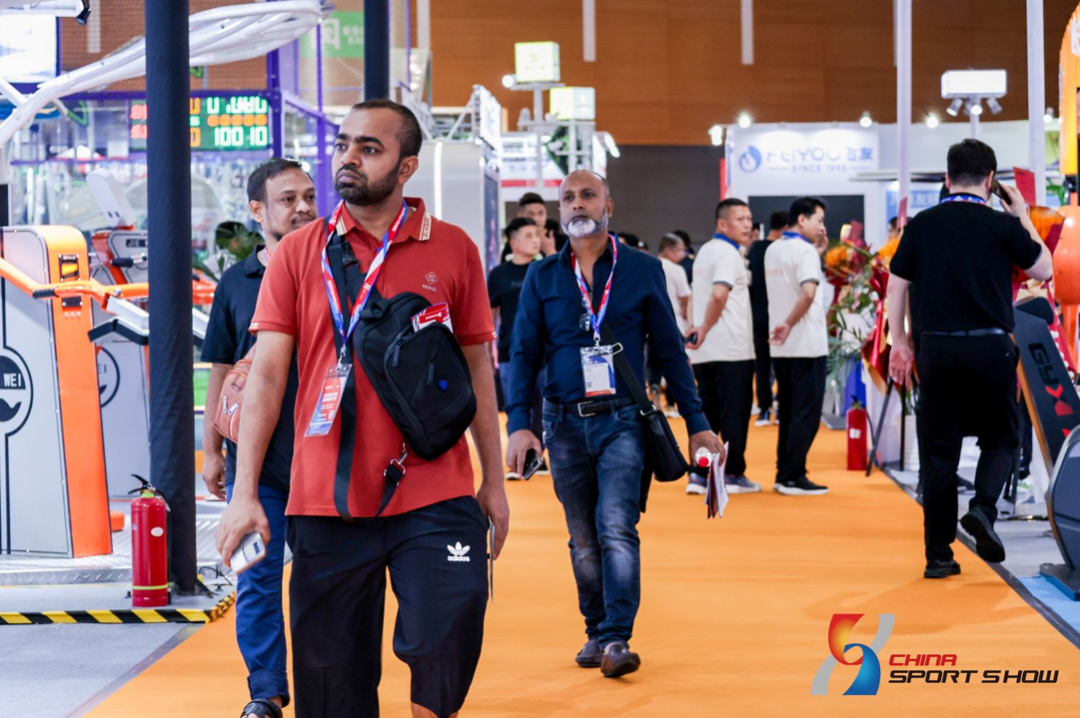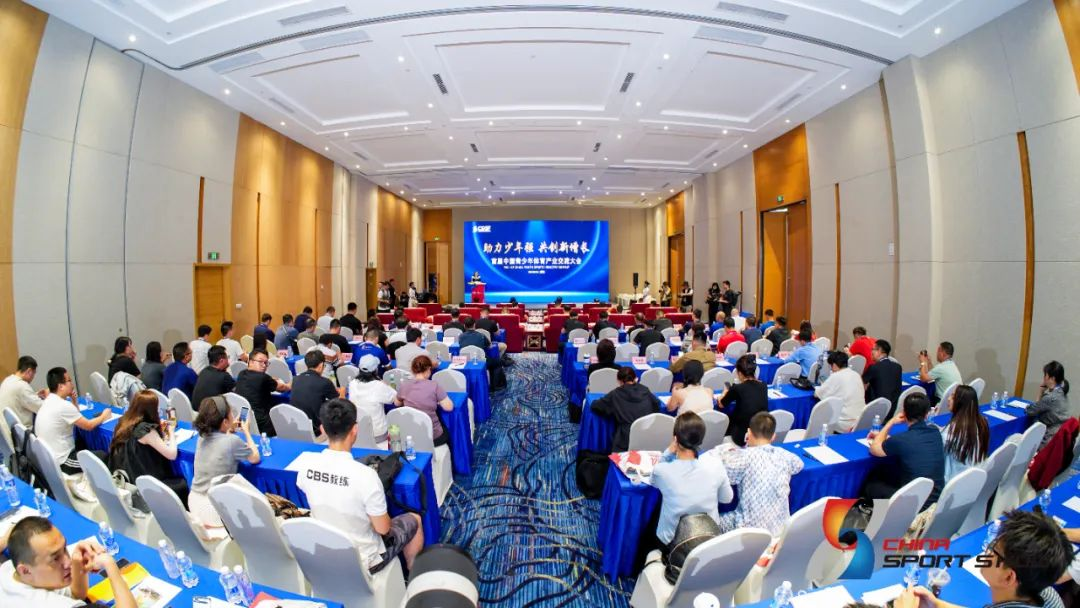LUO, Jie: There is No "Ceiling" on the Path to Service-oriented Modernization in Sporting Goods Manufacturing
Source:CHINA SPORTING GOODS FEDERATIONRelease time:2024-07-02Clicks:

Mr Luo, Jie, the vice chair and secretary general of China Sporting Goods Federation (hereinafter referred to as CSGF), said in an interview, a number of history-making exhibition data showed the industry's recovery; at the same time, the industry will not encounter "ceiling" restrictions in the process of transformation from manufacturing to service industries.
The following are the key points of the interview:
In the new era, China's sports consumption is driving overall economic growth. It plays a dual role as an emerging trend and a major health-related consumer trend. This calls for continuous development of the sports sector, leading its transformation into a pillar industry of the national economy. Key focus is placed on "new" and "consumption," and industry events like the China Sport Industry Conference serve as a think tank to analyze sports industry development and promote innovation.
The China Sport Show featured a variety of forums, conferences and activities covering a wide range of sports-related topics. “We held a record number of 17 forum sessions, reflecting the industry's demand for deeper insights. We are considering extending the forum cycle and focusing on improving business matchmaking to address these challenges.” he commented, “In addition to the conferences, we also have technical seminars, business matchmaking events, and sports carnivals covering badminton, baseball, bodybuilding, pickleball, basketball and other sports.”
This is the seventh time that China Sport Show has come to Chengdu. Chengdu is a leading city in China's internet economy and Internet celebrity economy in the new era. Coming to Chengdu is undoubtedly meaningful for the China Sport Show to enhance the C-End elements and attributes. Relying on Chengdu, it has attracted a large number of overseas buyers.
China Sport Show 2024 has an exhibition area of more than 180,000 square meters, with more than 1,600 exhibiting companies. The number of visitors is expected to exceed 100,000 including more than 3,000 overseas visitors. The exhibition has set historical records in terms of exhibitor numbers, participating brands and product categories, reflecting the vibrancy of the industry. There has been a 20% increase in exhibition space and exhibitor number over last year.
1. Continued downward pressure from the macroeconomic environment.
2. Lack of market confidence, leading to increased risk aversion and reduced consumer spending.
3. The need for more comprehensive and forward-looking policies and regulations in the sports industry to increase inclusiveness.
4. Inadequate availability of financial instruments tailored for sports manufacturing companies.
5. The need to strengthen the valuation of intangible assets and the protection of intellectual property.
6. Shortcomings in the accumulation of sports culture and youth sports education.

Addressing these bottlenecks will be crucial for sustaining and enhancing the growth of the sports industry in China.
The new quality productive forces are ultimately about innovation, which is something that Chinese sports manufacturing firms have never stopped trying to do. The new quality productive forces must not only be digitalized, but also be green and low-carbon, and conform to the characteristics of the times of high technology, high efficiency and high quality. In the future, the whole industry must pay attention to extending to the upstream, midstream and downstream of the industrial chain, and strengthen communication and cooperation with upstream, midstream and downstream partners in the industrial chain; the whole industry must pay more attention to the integration between industries; focus on cultivating and excavating talents, so as to achieve a deep integration of the "four chains" of innovation chain, industrial chain, capital chain and talent chain. On the other hand, the industry must practice "new quality productivity", and its essential meaning is: to integrate sports into ordinary lives.
From the perspective of "going overseas", the focus of the China Sport Show "going overseas" is not to recruit overseas exhibitors, but to recruit a large number of overseas buyers, which is also the first demand of many domestic exhibitors who choose to participate in China Sport Show. The return of overseas buyers has positive significance for exhibitors to expand overseas markets, achieve cross-regional operations, and enhance the international influence of brands.

“In the next stage, we are determined to make China Sport Show a platform for the exchange of sports resources:
1. We will increase our publicity efforts by strengthening exchanges and cooperation with various countries and regions.
2. We will focus on inviting overseas visitors and providing customized services during the exhibition period.
3. In the selection of host cities, we will have a comprehensive look at transportation, accommodation and international image.
These measures are aimed at enhancing the international influence and attractiveness of China Sport Show, and facilitating global sports resources exchanges and cooperation.” Said Mr Luo.
The countries along the Belt and Road offer great opportunities for the development of China's sports equipment manufacturing industry. There is also great potential in the service-oriented, intelligent and digital aspects of the manufacturing industry, especially with the current advancement of AI technology. This has lowered the barriers for scientific fitness, guidance and training. Furthermore, there is a huge growth market for sports tourism. In addition, with an aging population, there are prospects for sports healthcare and the integration of medicine and sports.
The strategic positioning of China Sport Show will not undergo any disruptive changes. Especially in today's internal and external environment, we need to reaffirm the primacy of the exhibition. This will enhance the commercial and business value of the show.
Of course, the business value should not only focus on generating orders, but also integrate with the promotion of local cultural values. Sports products have strong cultural attributes and high relevance to various projects. Traditional culture has great untapped potential, and we should explore more ways to combine sports product manufacturing with traditional culture. By absorbing cultural essence, we can help companies cultivate their brand culture.

Copyright ©2013-2023 CHINA SPORTING GOODS FEDERATION, All Rights Reserved ( 京ICP备05083596号-1 )



